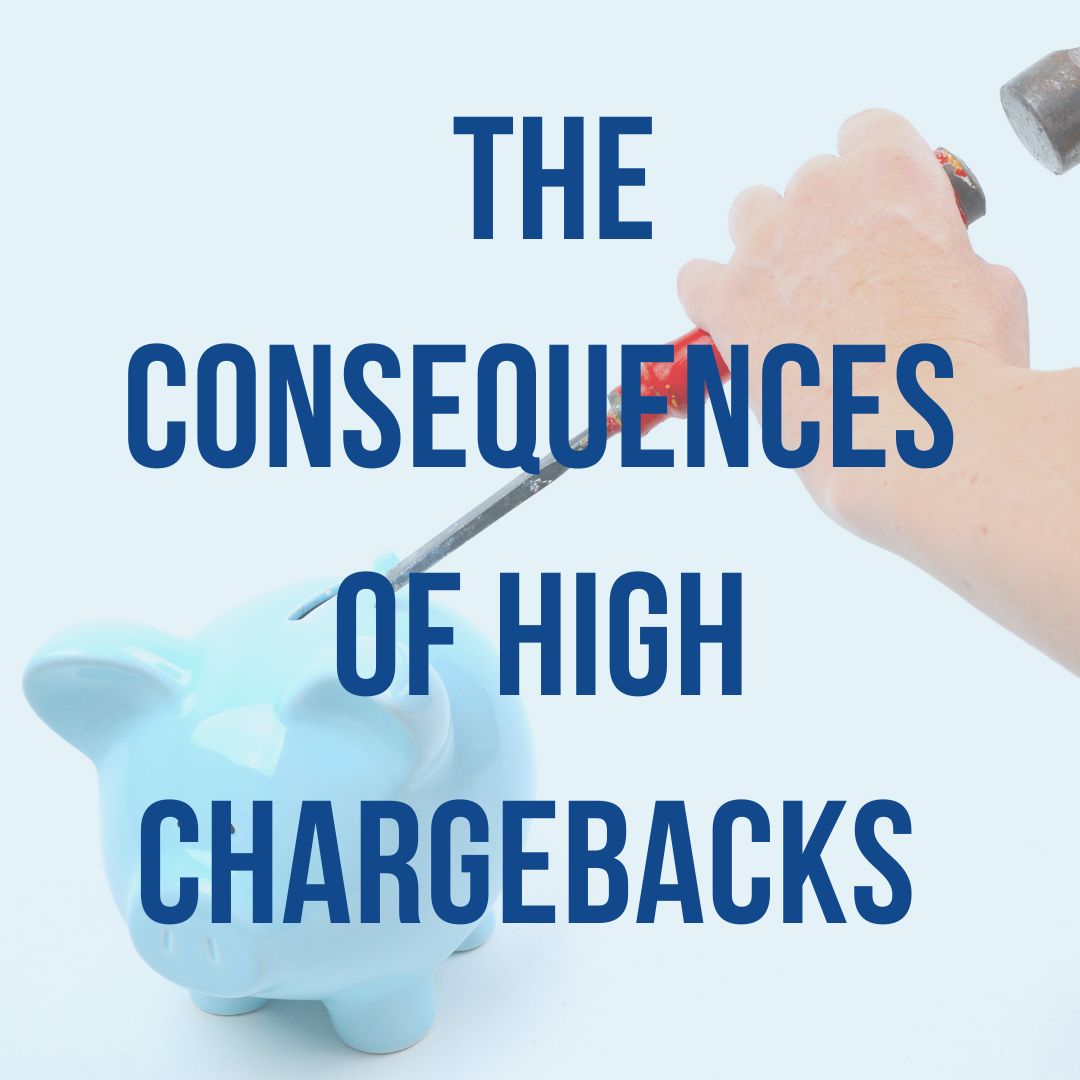 Everything about consumers has changed in the last two years. They way they shop, the way they feel, what they want and what they expect from brands, even the way they purchase. They’re shopping more online and they expect brands to have what they're looking for. But more than that, they want an experience. If merchants are going to capture the post-pandemic consumer's attention, they're going to have to do things differently.
Everything about consumers has changed in the last two years. They way they shop, the way they feel, what they want and what they expect from brands, even the way they purchase. They’re shopping more online and they expect brands to have what they're looking for. But more than that, they want an experience. If merchants are going to capture the post-pandemic consumer's attention, they're going to have to do things differently.
Today's consumers expect brands to communicate with them and they want to interact digitally in multiple ways. They expect it to be a seamless and pleasant experience. Consumers of today are savvy. They won't just buy a product because they need or want it. They only want to buy from brands that are socially conscious and make efforts to better the world. And they expect brands to value them (individually) as a customer. Today, consumers expect this attention to detail throughout their entire customer journey.
All of these changes mean that the old, traditional ways of marketing won’t speak to consumers the way it used to. Business owners must be continually agile with their marketing efforts and strategies. In our readings about marketing to the post-pandemic consumer, a few things stood out. Some of the highlights include deeper ways to define your target, molding a digital presence, company values, and, of course, customer experience.
Here, we offer a little insight into the post-pandemic consumer and how to speak to them.
How to "speak" to today's consumers
Businesses must build and market their brand values
Marketers traditionally rely on paid advertising, largely because of the ease of tracking return on investment. But we’ve seen a huge shift in human behavior. Consumers are more concerned with social issues than ever before and they expect brands to be as well.
Consumers are concerned with turning their buying power to brands that show a social conscience. Consumers today take the time to research brands before they buy from them. They want to know who they are and what they stand for.
While it is much more difficult to truly measure ROI on brand marketing, brand marketing must be budgeted alongside performance marketing.
Go digital or go home
Having an ecommerce presence is no longer an option. During the pandemic, there was a massive shift to online retail shopping. Businesses that did not adapt and adopt an ecommerce model were no longer relevant to customers. All evidence suggests that this trend will continue and become the norm for consumers. Consumers expect businesses to have at least some form of online presence. If they can't find what they want, they'll turn to alternate brands. Businesses that did not make a digital shift lost millions of dollars in sales, but more than that, they lost their customers and brand loyalty.
Interacting online has become a key part of day-to-day life for most consumers. During the pandemic, smartphone use increased as more than 70% of users accessed the internet via smartphone. It's crucial that businesses have fully mobile-compatible websites. An intuitive, convenient, personalized and pleasant customer experience relies on a fully featured mobile-optimized website.
Marketing channels are many and diverse
Marketers must reach people where they are, and where they are is changing. Businesses are connecting with consumers online through their websites. They are connecting through multiple social media channels as well. But there are also new opportunities to connect with local consumers through local online groups and communities.
During covid, people became much more involved in local online communities, such as NextDoor. Being holed up in their homes alone, consumers felt a need to feel connected to others. They developed relationships and trust within these online communities.
They also began to search to fill their needs for products and services with local businesses in their communities. This led to a huge increase in shopping local with businesses that had what they needed in stock. This creates a unique opportunity for marketers to connect meaningfully with locals to create a community customer base.
Integration vs silos
When creating an integrated multi-channel marketing plan, ensure collaboration between different departments. No longer can we silo marketing strategies to separate departments.
Customer expectations are higher than ever before. Consumers no longer shop to see if you have what they want, they expect you to. Not only must you market through multiple channels, but those channels must be integrated. Consumers expect a seamless experience that is connected, personal and frictionless. That means that they want to have a connected experience across all channels without feeling an interruption. Regardless of disconnect in inter-site silos, or interoffice silos, they must be concealed from customers.
Marketing needs to be a fluid and evolving strategy. This is accomplished by incorporating AI and machine learning with data to create more relevant experiences. Marketers can use marketing best practices as a foundation. But then expand on those using data and continually adjusting the strategy using the ever-changing data information.
In order to understand all the data, marketers must have at least a basic understanding of analytics. By analyzing data, marketers come to the true, unbiased information. There are no opinions, no pressures, just pure, unquestionable insights. This is the only way you can see exactly where your efforts excel, and where the problems are. Once you're empowered with this information, you can work to optimize that specific ecommerce funnel area and inspire a specific outcome.
Target market definition
It's not that the need for having a defined target market has changed, it's how you define your target market that's changed.
Businesses used to base their target audience on things like demographics- age, location. Now businesses must narrow that down and dig deeper to further identify attitude traits and beliefs. Marketing messages must be localized and personal. First, marketers must narrow down their targets based on geographic location, tailoring messages to individuals based on country, state, even city. Then, going even more targeted than geographics, messages must align with an individual's values and be personally relevant.
For example, are you hoping to reach a target market that is budget conscious? Your marketing might focus most on a product's use and functionality and how it will last. To grab a health conscious target market, you would redesign the message to focus on trust in the brand and the safety of products and/or shopping.
Earth-first target advertising would focus on how environmentally conscious your brand is.
This way merchants can create messages that “speak to” and resonate with consumer’s values as opposed to a whole segment, age group, or demographic.
Gen Z is a force to be reckoned with
The whims of the Gen Z generation cannot be ignored by marketers. In the U.S., this age group accounts for 40% of the nation's consumers. Even though their ages still only range from about 10 to 25 years, they currently command $143 billion in purchasing power. And they are a digitally native generation with 98% globally owning a smartphone. They are also the most environmentally conscious generation and put kindness, honesty, and giving on a pedestal.
97% of Gen Z turn to social media as their “top inspiration for shopping” according to the Status of Social Commerce 2021 study. The massive growth of social commerce may have started with the pandemic, but it will be the next generation that spurs continued growth.
Merchants must not only embrace social media marketing, but embrace the mentality of the next largest generation of consumers. Brands today cannot simply put forth great products, they must also put forth great values.
 Social Commerce
Social Commerce
Businesses are no longer reaching customers on social platforms with the hope of bringing them back to a website. Instead, they’re reaching them, providing a solution, and completing the purchase right there, without ever leaving the platform.
In 2021, mid-pandemic, the global market for social commerce sat at $492 billion worldwide. A new study found that social commerce is growing 3 times faster than eCommerce and predicts the global social commerce market to more than double to reach $1.2 trillion by 2025.
The way consumers pay
Consumers continue to shop online and the one thing they demand most is convenience. And that convenience includes how they pay. Consumers of today want multiple and feature-rich transaction options.
The youngest generation is a digital first generation, which means they are very comfortable shopping and purchasing with digital means. But they’re not the only portion of society. Most generations have changed the way they shop and become more comfortable conducting business and transactions online. Consumers expect to pay whatever way they want, whenever, and wherever they want.
Merchants must have an online presence, their site must be optimized for mobile, and they must offer in-app purchases. And, it is incredibly important for merchants to offer more payment options and more flexibility.
Consumers have adopted contactless payment convenience and expect businesses to accept tap-to-pay and mobile wallets. Online, BNPL options such as Klarna and AfterPay have become increasingly popular. Customer vaults to securely store tokenized customer data for faster checkout provide convenience and speed.
Considering that younger consumers do the majority of their shopping on social media sites, brands must adapt and integrate in-app payments on their social media channels.
Convenient flexible payment options play a big part in creating an enhanced customer experience. When done right, they can help merchants make customers feel secure and trust buying with you. The last place you want to cause friction is at the checkout.
When optimizing online payments for today’s savvy consumer, it's important to choose the right payment processing partner. Merchants want a merchant account provider that offers the payment solutions that fit their business, of course. But they also want to partner with a payment processor that can provide the Business Intelligence and data reporting integral to today’s marketing needs. And they must provide seamless integration while ensuring top of the line security and PCI Compliance.
At MonerePay, we provide solutions to accept payments and support a high performance website with cutting edge Business Intelligence Reporting. Accept payments whenever and wherever your customers want, with seamless integration and insightful reporting. And manage it all from anywhere.
For a future-forward payment processing partner that can help level up your business performance, call MonerePay today. We’re excited to show you what we can do together.

(1).jpg)

.jpg)
.jpg)
